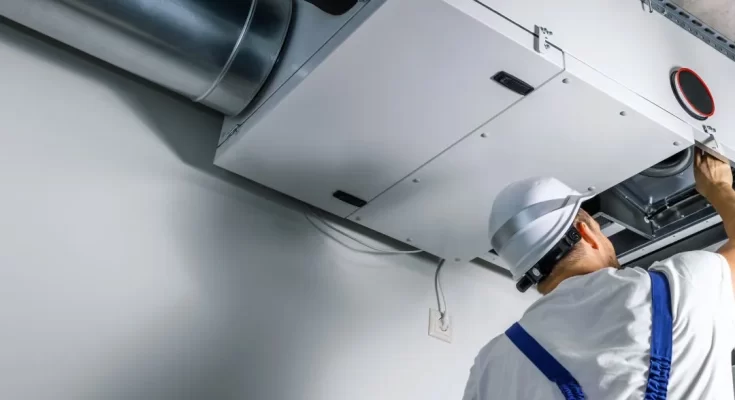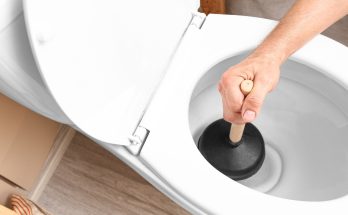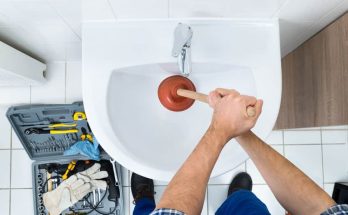To stay comfortable and energy-efficient at home or in the office, it’s important to understand your HVAC system. It may seem complicated at first, but it’s actually a collection of interconnected components that work together to provide warmth during winter, cooling in the summer, and help manage energy usage effectively. In this blog, we’ll explore the key HVAC system parts, detailing their function, importance, and how they contribute to overall system performance and efficiency.
Compressor: The Heart of Climate Control
What Does the Compressor Do?
Often referred to as the heart of the HVAC system, the compressor plays a critical role in the refrigeration cycle. It takes in low-pressure gas refrigerant and compresses it into a high-pressure vapor, which is then pushed through the system. When the thermostat signals a need for cooling, the compressor springs into action, pulling in the gaseous refrigerant from the evaporator coil. This vapor is then compressed to a high-pressure, high-temperature gas before reaching the condenser coil, where heat is expelled and the refrigerant returns to a liquid state.
The compressor’s reliability and efficiency directly affect the performance of the entire HVAC system. There are different types of compressors—reciprocating, scroll, rotary, and screw—each with its own benefits and ideal applications. When properly maintained, a compressor can last decades, though it remains vulnerable to issues such as refrigerant leaks, electrical failures, and mechanical wear.
Signs Your Compressor Needs Attention
Loud clicking, grinding, or rattling noises are warning signs that your compressor may be failing. If your system runs longer than usual or struggles to cool your space, it may be a result of low refrigerant, electrical issues, or internal component wear. Ice buildup on the compressor or connecting lines is another red flag, indicating airflow restrictions or refrigerant problems. An unexpected spike in your energy bills may also signal a struggling compressor.
At the first sign of trouble, contact a licensed HVAC technician to avoid further damage and costly repairs.
Choosing the Right Compressor: Size and Efficiency Matter
Selecting a properly sized compressor is vital. An undersized unit will overwork itself trying to meet demand, while an oversized one can cause short-cycling, reducing comfort and efficiency. Always perform a load calculation to ensure proper sizing.
Look for units with high SEER (Seasonal Energy Efficiency Ratio) ratings or ENERGY STAR certification for better long-term energy savings. Inverter technology is another valuable feature—it allows the compressor to adjust speed based on demand, ensuring consistent temperatures and reduced energy use.
Ductwork: The Arteries of Your HVAC System
Why Duct Design Matters
Ducts distribute conditioned air throughout your home or office. Just like arteries in the body, they must be the correct size and properly maintained to ensure optimal airflow and indoor air quality (IAQ). Poorly designed or aging ductwork can lead to airflow restrictions, uneven temperatures, and increased energy consumption.
Improper sizing can create pressure imbalances, allowing dust and pollutants to infiltrate your living space. Additionally, moisture buildup inside the ducts encourages mold growth—posing health risks and system inefficiencies.
How to Maximize Duct System Performance
To ensure your ducts are working properly:
- Schedule a professional duct audit. This helps identify leaks, blockages, or design flaws.
- Seal all leaks. The U.S. Department of Energy estimates 20–30% of HVAC energy is lost through leaks.
- Insulate ducts in unconditioned areas. This prevents energy loss and enhances efficiency.
- Balance airflow using dampers. If some rooms are hotter or colder than others, airflow adjustments may be necessary.
- Clean ducts regularly. This prevents debris buildup that can obstruct airflow and lower system performance.
Troubleshooting Common Ductwork Issues
Common ductwork issues include:
- Uneven airflow. This may be due to closed dampers, debris blockages, or incorrect duct sizes.
- Noisy ducts. Whistling or banging sounds often result from high airflow speeds or loose components.
- Condensation. Water on ducts usually signals poor insulation or high humidity. Addressing this quickly prevents mold and mildew.
Regular inspections and proactive maintenance can significantly extend the lifespan of your duct system and improve overall HVAC efficiency.
The Evaporator Coil: Where the Cooling Happens
What Is the Evaporator Coil?
The evaporator coil is essential in removing heat from indoor air. It receives high-pressure liquid refrigerant, which turns into a low-pressure gas as it absorbs heat from the surrounding air. As warm air is blown over the coil, the refrigerant absorbs that heat, effectively cooling the air before it circulates through your space.
Humidity Control and Comfort
In addition to cooling, the evaporator coil removes humidity. As warm, moist air passes over the cold coil, condensation forms and is collected in a drain pan. This helps lower indoor humidity, which in turn increases comfort levels and reduces the perceived temperature.
Maintenance Tips for the Evaporator Coil
- Clean the coil at least once a year. In dusty or humid environments, clean it more frequently.
- Use coil cleaner carefully. Always follow manufacturer guidelines.
- Clear the drain pan. A clogged pan can cause water damage and mold.
- Change filters regularly. Dirty filters restrict airflow, overworking the coil.
When to Replace the Evaporator Coil
With regular maintenance, evaporator coils can last 10–15 years. If you’re experiencing frequent cooling issues, refrigerant leaks, or signs of corrosion, it may be time for a replacement. Newer coils are often more efficient and can significantly reduce energy costs.
Thermostats and Controls: The Unsung Heroes
Smart vs. Traditional Thermostats
Traditional thermostats are basic but reliable, offering simple temperature control. Smart thermostats, however, provide advanced features like remote access, learning behavior, and energy reports. Some even integrate with smart home systems and adjust temperatures based on your location using geofencing.
Though smart thermostats cost more upfront, they often pay off in energy savings over time.
Proper Thermostat Calibration
Ensure your thermostat reads the correct room temperature:
- Use a secondary thermometer to compare readings.
- Calibrate the thermostat as needed using manufacturer instructions.
- Keep it away from heat sources like lamps or direct sunlight.
Advanced Features to Boost Efficiency
Modern thermostats may include:
- Multi-zone capabilities. Customize temperatures by room.
- Energy usage tracking. Understand your consumption patterns and get recommendations.
- Weather-responsive adjustments. Prepare your home based on upcoming forecasts.
These enhancements can help you get more from your HVAC system while lowering monthly costs.
The Importance of Understanding HVAC System Parts
Knowing the critical HVAC system parts and their roles in maintaining comfort and efficiency helps homeowners make informed decisions about maintenance, upgrades, and energy use. From the compressor and evaporator coil to the ductwork and thermostat, each component plays a specific part in creating a comfortable, healthy, and cost-effective indoor environment.
By regularly maintaining these essential HVAC system parts and staying aware of potential issues, you not only improve system performance but also extend its lifespan. Whether you’re a DIY enthusiast or rely on professional HVAC service providers, this knowledge empowers you to optimize your heating and cooling system year-round.




